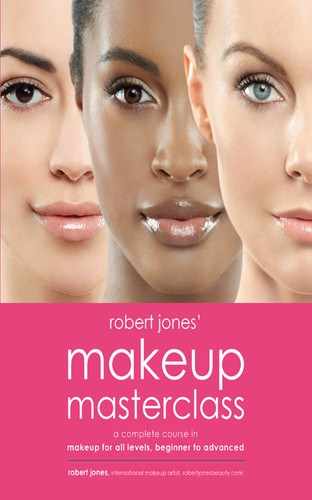chapter 7
getting cheeky
A lot of people walk around with nothing on their cheeks. But for me, you’re never finished without a little color. It goes such a long way toward bringing life to the face. I can’t imagine finishing without some blush or bronzer. Everyone needs that last shot of color.
So why is it so often left out? Perhaps people don’t understand why and how to use blush and bronzer. It’s not about contouring with blush, and it’s not about making you look tan with bronzer. Instead, it’s about letting the products work together to create the perfect glow. Fortunately, you can get that glow simply and beautifully. Let’s explore color and placement.

choose the right bronzer
Our goal with bronzer is not to make you look like you have a tan; it is just to give the skin a beautiful hint of color. Thus, you do not need one that is a great deal darker than your skin, just a shade or two darker. It should never be more than three shades darker than your skin’s natural color.
For most people, the hardest part of picking out a bronzer is choosing the right shade. If you have ivory skin, choose one with a neutral tone; it should be more flesh toned, with a slight peach or pink undertone to it. If you have beige skin, you can use a little more of a golden tan undertone, which is perfect for your warm glow. And if you have ivory or beige skin, steer clear of orange. Too many of the products out there are far too orange, and there’s nothing worse than a bright orange, overly bronzed face.
If you have olive (darker beige) skin, a bronzer with a saturated terra cotta or neutral brown undertone will give you the color you need. And if you have bronze or ebony skin, an intense copper or rich warm brown works best. Keep in mind that with dark ebony skin, your bronzer is not supposed to deepen your skin color. You already have beautiful rich depth to your skin, so just look for something with a slight shimmer to give you a glow.
Bronzers with a matte finish will always look the most natural on ivory or beige skin. I recommend a matte finish during the day. For a nighttime look with a little extra glow, you could add a layer with a little shimmer in it, but always start with a matte bronzer.
If you have light bronze skin, I would still, in most cases, recommend a bronzer with a matte finish because it gives the most natural effect. But if you have darker bronze to ebony skin, you need a little shimmer in your bronzer. If the finish is too matte, it can appear ashy on your skin. It doesn’t have to be heavy on the shimmer—that could be too much even on dark skin—but a light shimmer will give you the glow you are looking for.
at first blush
One of the biggest makeup mistakes you can make is contouring with blush. You already know how to contour your face (see here and here). Blush, meanwhile, is used to give the face color and life.
First, I want to dispel some of the old myths about placement:
Myth #1: Blush should never be worn closer to your nose than the width of two fingers. This rule might not work for everyone. Depending on the width of your fingers, your blush could end up on the side of your face instead of coming all the way to the apples of your cheeks!
Myth #2: Blush should never be applied to your cheek below the tip of your nose. If you follow this advice and you have a cute little turned-up nose, your blush could be applied above the apples of your cheeks (on top of your cheekbones). This certainly does not work for everyone.
Myth #3: As you age, you should apply cheek color higher. Although your skin may lose some of its elasticity as you age, I can assure you that your cheekbones remain in the same place!
1. Smile.
2. Locate the center of the “apple” of your cheek and place your index finger there.
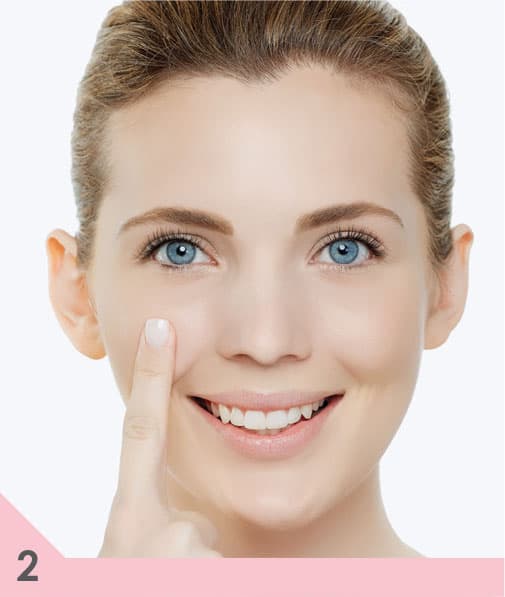
3. Place your thumb at the top of your ear where it connects to your head.

4. Now, take your thumb and bring it toward your index finger. The bone you feel is your cheekbone.
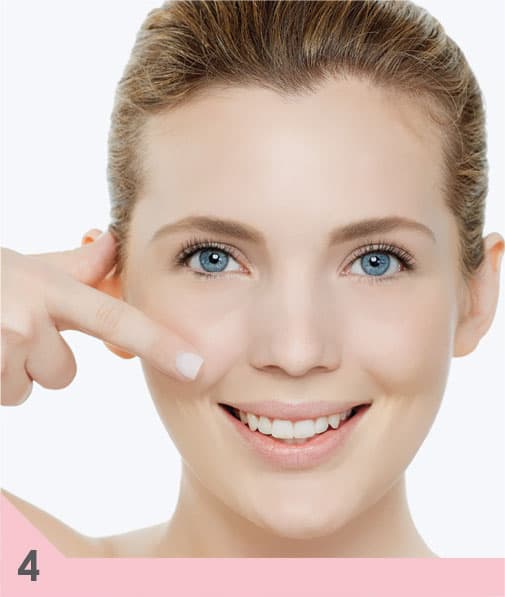
5. Apply the color directly onto your cheekbone.
Forget the old myths. When applying bronzer and blush, you want to concentrate most of your color on the cheekbone. Where exactly is your cheekbone? No worries—it’s easy to find. Just take this can’t-miss application placement test:
how to apply bronzer
Bronzer makes your skin look sun-kissed and alive. It gives it a healthy glow without subjecting it to damaging ultraviolet rays. To warm your face and accentuate your bone structure, simply dust bronzing powder or crème bronzer along your cheekbones, the outer edges of your face, and your temples. Bronzer is also useful for lightly sculpting the nose and defining your jawline and chin (see here to here and here to here).
powder
1. Make sure you have a nice, fluffy, full bronzer brush; this will help with your blending and give you the most natural application. Begin at the back of your cheekbone and sweep the bronzer forward toward the apple of your cheek. Then take the brush back toward your ear. This lays your color in place.
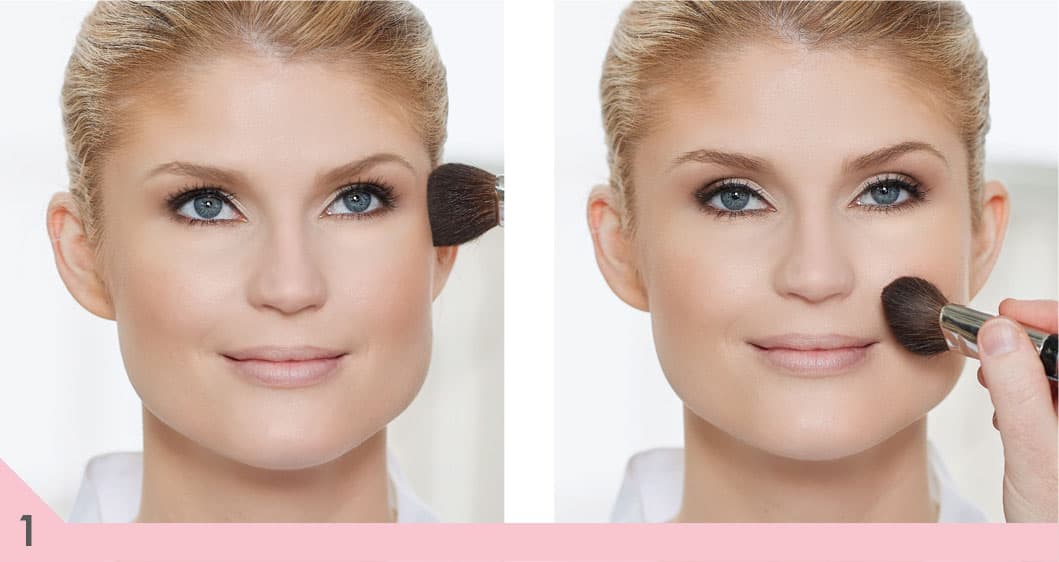
2. Use the brush in the opposite direction (up and down) to blend. Blend well.

3. Add a little bronzer at your temples to help shape your face. Sweeping the bronzing powder up around the temples and eye sockets can also help your eye color pop, especially if your eyes are green or blue. Finish by sweeping your bronzer along your jawline to add definition.
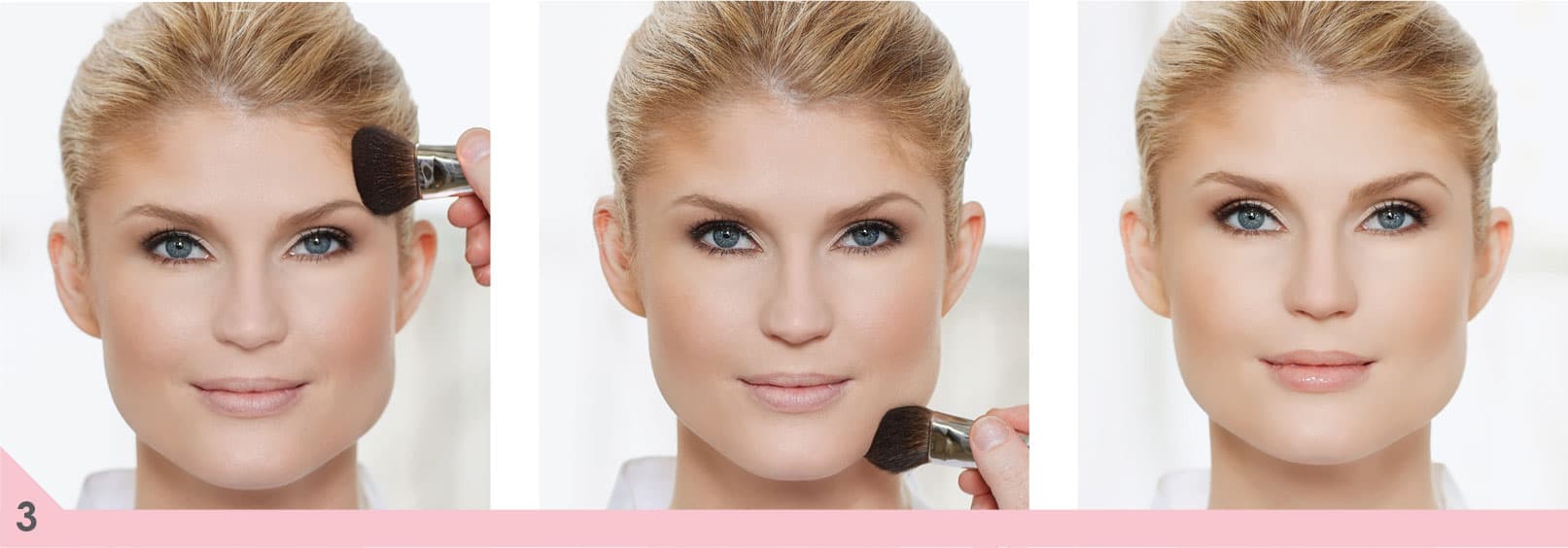
crème and gel
1. With your finger or a sponge, dot the color all along your cheekbone. Start at the apple of your cheek and work toward your ear.
2. With a clean finger or sponge, blend the color out (up and down) and back toward your ear.
3. Blend a little up onto your temples for the ultimate glow.
how to apply blush
Using blush is about adding a beautiful shot of color to your face, giving it life. It’s the perfect way to add color back to your face as you age, but also just a great way to add a great glow at any age. You have multiple options when come to how to get it.
powder
A powder blush is the easiest to use. Just as with bronzer, make sure to use a soft, full brush for your best application; it will help you achieve the most natural and blended look. There are two ways to apply your powder blush: a basic method that gives you more intense color and a technique called “popping your apples” that will give you a very soft, natural flush.
basic method
1. For the most color, apply blush to your cheekbone area, starting at the back (closest to your ear). Sweep your cheek color toward the apple of your cheek and then back toward the ear again. This lays your color in place.
2. Use the brush in the opposite direction (up and down) to blend. The most intense color will lie at the back of your cheeks, giving your face more dimension.
apple popping method
1. Apply bronzer to your cheekbones, starting at the back (closest to your ear). Sweep your cheek color toward the apple of your cheek and then back toward the ear again. This lays your color in place.
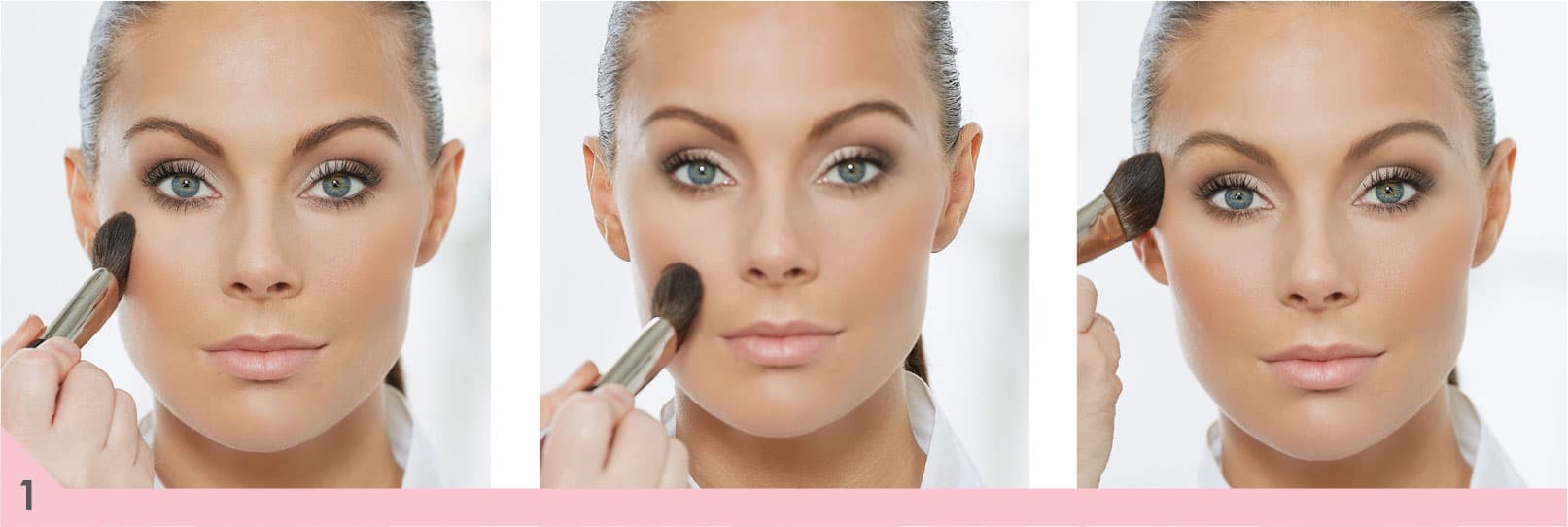
2. Use the brush in the opposite direction (up and down) to blend.
3. Now grab a light, sheer, colorful blush. Smile and apply your blush color to the apples of your cheeks, blending back toward the area that you bronzed. This gives the apples of your cheeks, where the color is concentrated, a beautiful glow. The secret is color selection; you’ll want to use a sheer shade of blush because a dark or intense cheek color can be too harsh and unnatural-looking when applied this way. Your goal is to glow, not to paint Raggedy Ann–style circles on your cheeks.

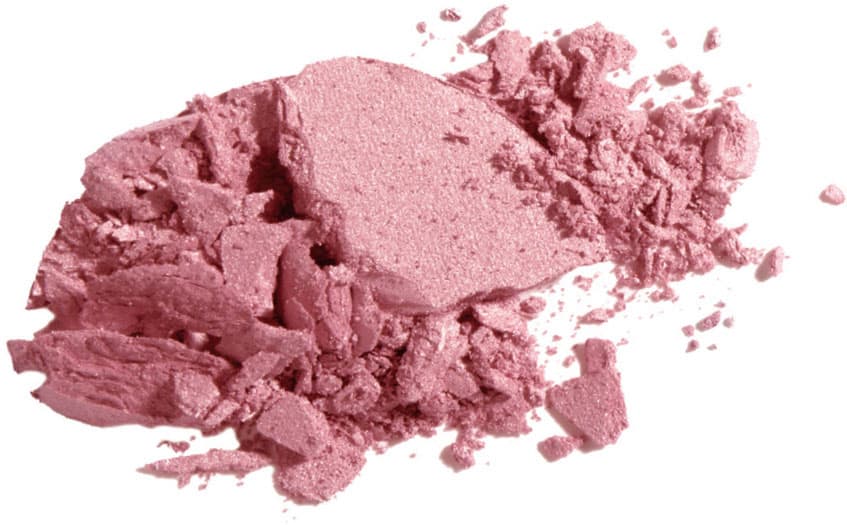
crème or liquid blush
If you use crème or liquid blush, apply it with a sponge, your fingers, or a crème blush brush after your foundation and before your powder for easier blending. If you wear your blush without foundation, crème and liquid work better than powder blush because they contain moisture that blends better with the natural moisture of your skin.
1. To apply crème or liquid blush, first dot a little onto the apples of your cheeks.
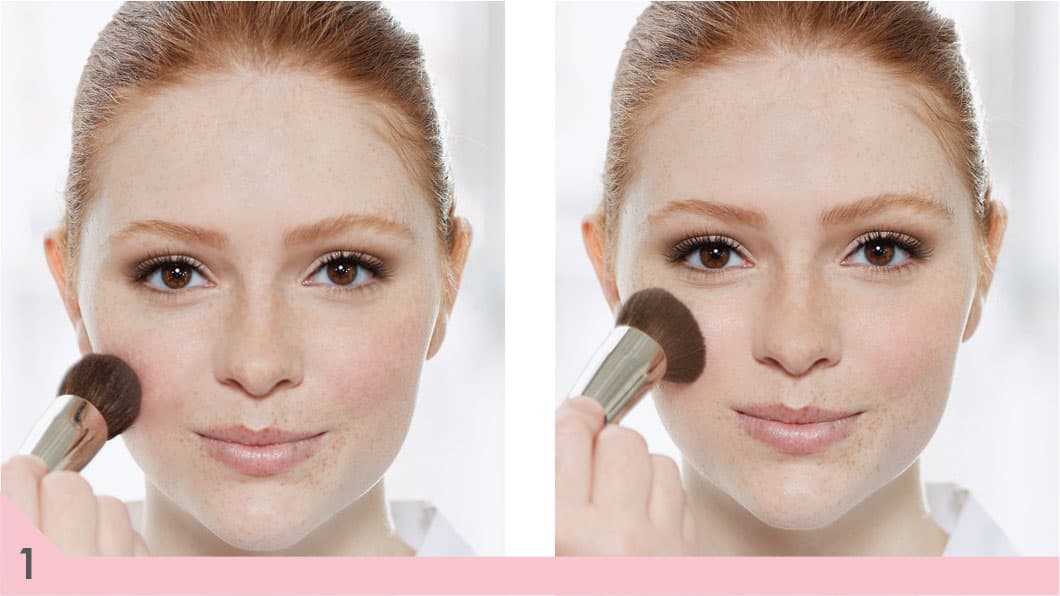
2. Then blend back toward your ears with a clean sponge.
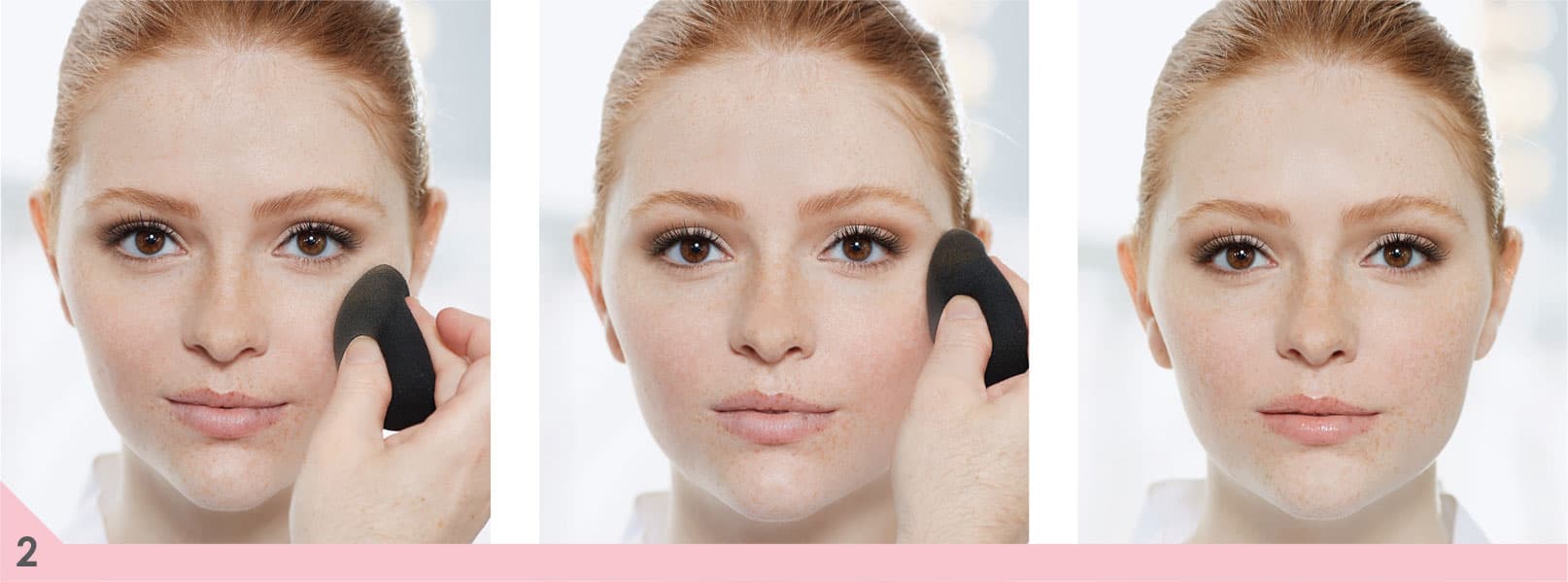
With any blush, you should remember this rule: Always match textures—crème on crème and powder on powder. Apply crème or liquid blush after your foundation and before your powder. If you wait until after you powder, it will not go on smoothly or evenly. Apply powder blush after your foundation and powder; if you apply it before you powder, it will go on splotchy and uneven.
